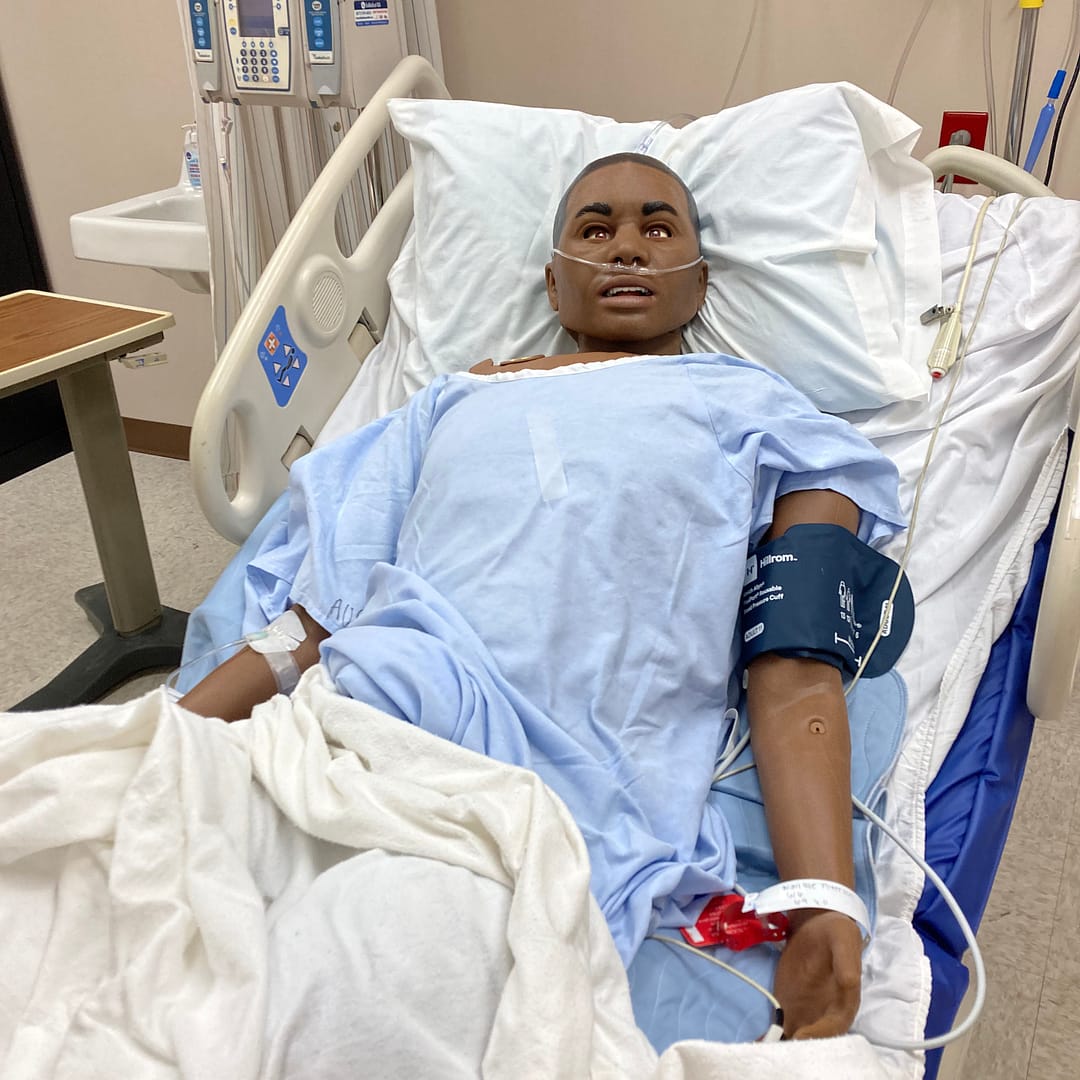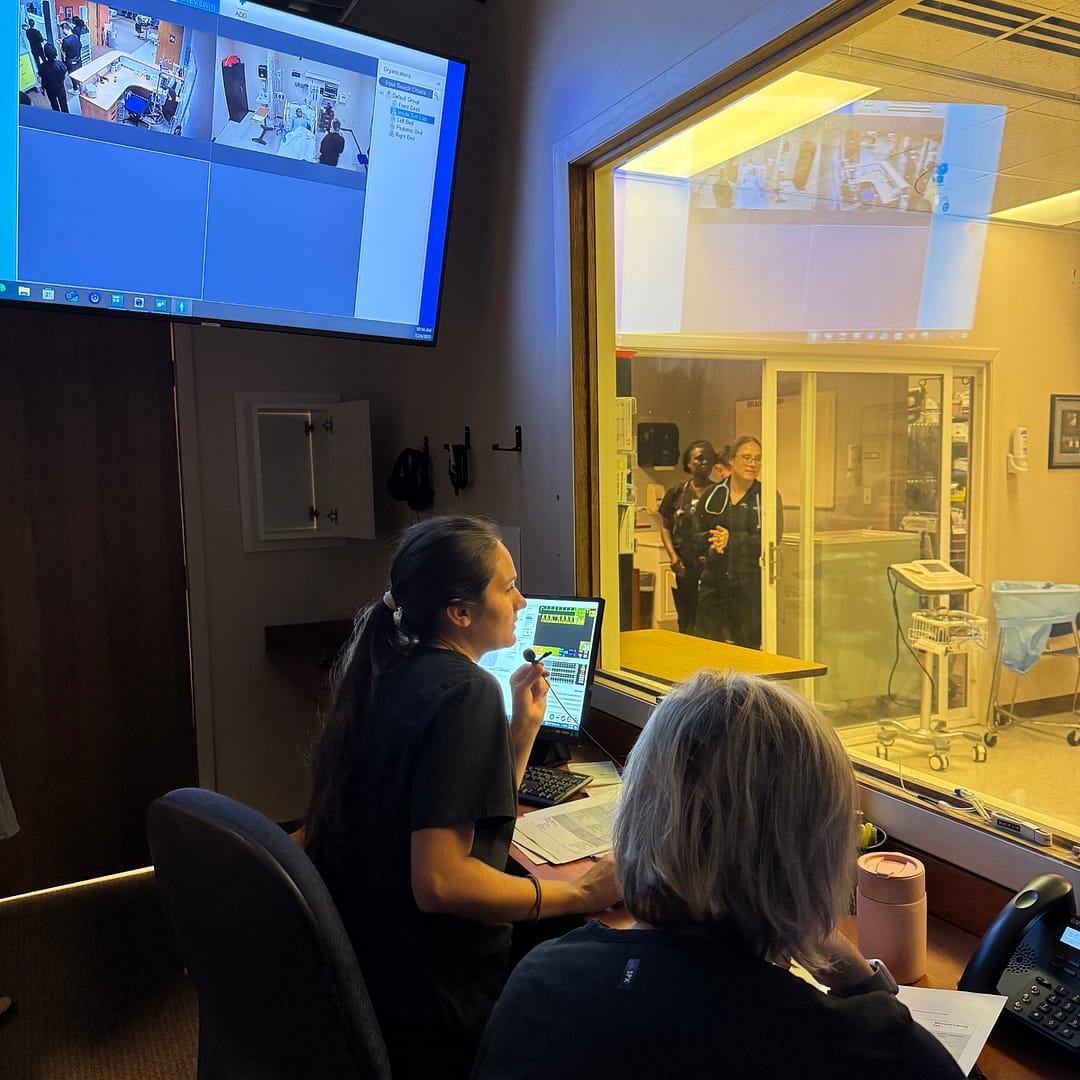Practice Before Patients: Inside AU’s Nursing Lab
BY ERIN BURKETT ’20
2 MIN. READ
Stepping into the simulation lab on the second floor of Hartung Hall at Anderson University almost feels like stepping off the elevator for a ward at the hospital. The familiar beeps of vital sign monitors and chatter of medical language fill your ears as you pass by the nurses’ station. Other sights congruous with healthcare meet your gaze, including a machine that calculates doses of medication to help increase the accuracy of dispensing prescribed pharmaceuticals.
Deeper inside the lab, furthering the immersive experience, is a hospital room. Complete with a hospital bed, oxygen tanks and tubing, IV hooks with full bags, monitors, and other equipment typically found in an infirmary, it is the perfect setting for nurses in training to learn and hone their growing skills.
The hallmark of the simulation experience is interacting with the patient, who, in this case, is a state-of-the-art manikin, ready for treatment. “Simon,” as he is affectionately called by the School of Nursing students and faculty, is an extremely lifelike gold-standard feat of technology that allows students to practice hard skills, bedside manner, and situational awareness and management in an environment that is, ultimately, risk-free.
The simulation manikin (SimMan) has eyes that move, blink, and dilate; programmable sounds include circulatory, respiratory, and digestive systems; movable limbs; spots for IV placement; fleshlike extremities; and so much more. He can even sweat! The simulation director’s familiar voice can be heard through the SimMan’s microphone, embodying the persona of a patient in distress who is eager to receive care from AU nursing students.
This summer, a cohort of students from AU’s accelerated Bachelor of Science in Nursing (ABSN) program participated in their first simulation lab. The students performed physical examinations on the SimMan, interacted with the “family member” at his bedside, collaborated to determine best courses of action, executed treatment plans, contacted “physicians,” and followed protocol using what they had learned in their classes thus far.
The simulation director, Savannah Laker, watched the situation unfold behind a one-way mirror, taking notes on her students and controlling the SimMan with another nursing faculty. At the end of the simulation, she debriefed with the students, asking about what went well, areas to improve their skills and order of operations, communication, and more. The entire simulation lab experience is hands-on, interactive, and includes mentorship from nursing faculty who have years of experience providing care to patients.
The simulations that take place in Hartung Hall are state-of-the-art, preparing students with real skills for real situations they will encounter in clinicals and beyond. Complete with technology budding nurses will encounter and a storage room that is set up like one you might find at a hospital, the simulation lab is the ultimate incubator for nursing students who will serve their patients well due to their AU education.
Anderson University educates students for lives of faith and service, offering more than 50 undergraduate majors, 30 three-year degrees, 18 NCAA Division III intercollegiate sports, alongside adult, graduate, and online programs. The private, liberal arts institution is fully accredited and recognized for excellence in business, computer science, cybersecurity, engineering, music, nursing, psychology, and teacher education programs. Established in 1917 in Anderson, Indiana, by the Church of God, the university remains committed to its Christ-centered mission.





